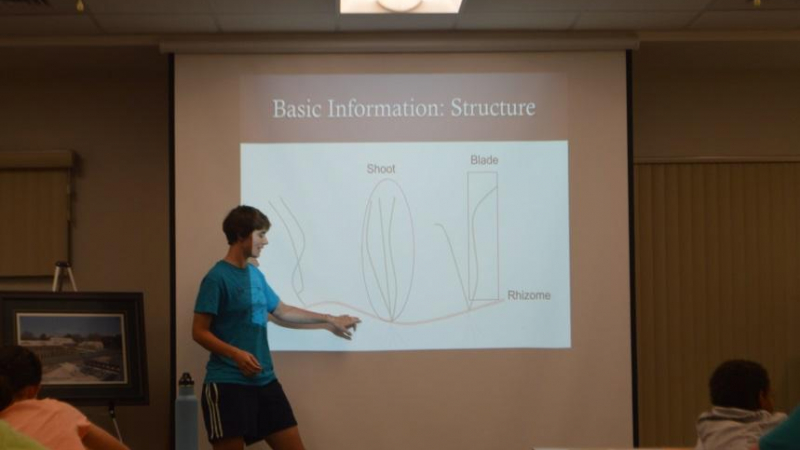Hollings intern at Chesapeake Bay-Virginia National Estuarine Research Reserve (Gloucester Point, Virginia)

A rising senior at Smith College (MA) studying biology, environmental science and policy, Celeste Venolia interned this summer at the Chesapeake Bay NERR in Gloucester Point, VA. She helped lead day camps for 1-2nd and 5th-6th graders, and an overnight camp for 7-8th graders. She had previously conducted seagrass research while studying abroad in Australia, and built on this experience by developing a seagrass-focused lesson plan for middle school summer camps.
Her lesson plan included an overview of seagrass biology and an interactive, classroom-based exercise on measuring percent cover of two different local seagrass species, eelgrass and widgeon grass. Students collected data at four different distances from shore. Each mock-quadrat was made of wire mesh, with ribbon and yarn to represent the two species of seagrass. Celeste then worked with the students to discuss what the data means and the relationship between water quality and seagrass percent cover. Students enjoyed the exercise and a pre and post-test was administered to measure student learning. Celeste hopes to present her workshop at the Mid-Atlantic Marine Education Association meeting in Delaware.
This internship was Celeste’s first experience with the Chesapeake Bay, and she appreciated both the research and education opportunities available at the NERR. During the internship, she gained an appreciation for educators of all types. Celeste plans to continue with research in graduate school, but would like to make informal education a part of her future career. She notes that research and education are inherently connected, and scientists should make their work accessible to students and the public.

